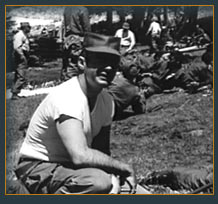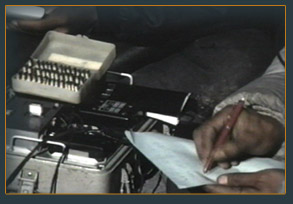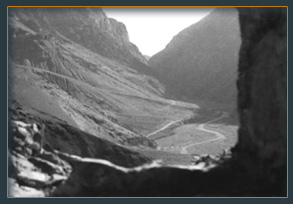

 
Page 1 - 2 - 3 - 4 - 5 - 6 - 7 - 8 - 9
News of the rebellion spread to Lhasa where Andrug Gompo Tashi, a well-known Khampa trader living in the capital, started an underground organization called Chu Shi Gang Drug, Four Rivers Six Ranges. Gompo Tashi sent a small group of men to India to explore the possibilities of getting military support from foreign countries and organizations. Their destination was Kalimpong, a thriving frontier town, the most important trade post between India and Tibet and the centre of the émigré Tibetan world. The Dalai Lama’s elder brother, Gyalo Thondup, had been living here since the early fifties and was actively engaged in promoting the Tibetan cause. He had already been approached by the CIA, which was keen to find ways of supporting the dissident Tibetan movement as part of its global anti-communist campaign.
Gompo Tashi’s men went to meet Gyalo Thondup. "They came to me seeking help," he recalls. "I couldn't provide any help except my verbal sympathy. Then they asked me to approach, on their behalf, people I knew in the American government. It all started like this." The American response was encouraging. Gompo Tashi’s men couldn’t have been more excited. They had heard of America, mainly through communist propaganda, which constantly decried the country as China’s greatest enemy. Now this very country was coming to their aid. Six men were selected from Gompo Tashi’s group and told be ready to go on a secret mission, the exact nature of which was not revealed.
One night, in the spring of 1957, Gyalo Thondup drove the six men down to the plains, past the town of Siliguri, until, in pitch darkness, they reached the end of a country road. Using a compass, he then led them across fields and rice paddies to the banks of a large river. Here, he turned back after entrusting them in the care of his assistant who helped them make a hazardous river crossing. On the other side, a group of soldiers was waiting for them. The men were driven a short distance to a hut where an American – the first white man they had ever seen – greeted them warmly. From here they were taken by car and then by train, heavily guarded in a sealed compartment, to a small airstrip where an unmarked transport plane – a wondrous new sight – awaited them. They did not know it but they were on the outskirts of Dhaka. They flew for what seemed like an eternity, over thick tropical jungles and unimagined expanses of water, stopping only to refuel, until at last they landed at their destination – a small palm-fringed island in the middle of nowhere. The men stumbled out, airsick, dazed and bewildered. They were in Saipan in the South Pacific, as far away from their high mountain homeland as they could possibly be.

|






